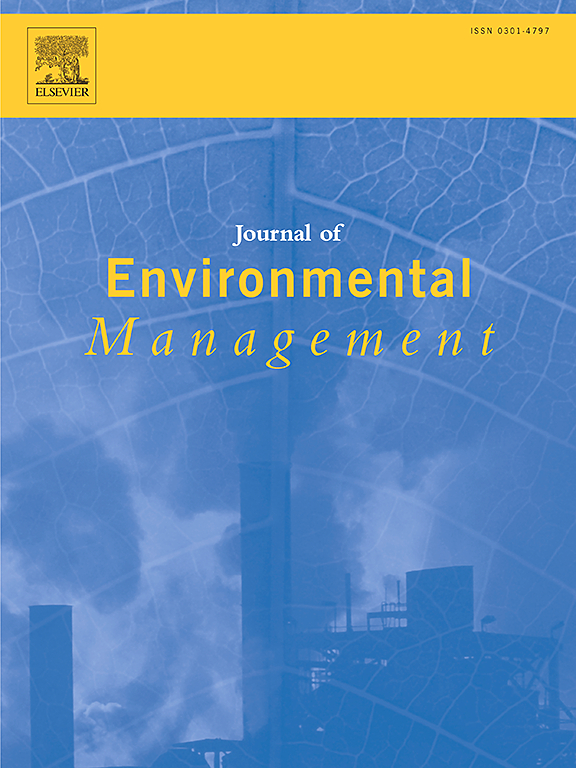Remediation of hexavalent chromium contaminated soils by stimulating indigenous microorganisms: Optimization, community succession and applicability
IF 8
2区 环境科学与生态学
Q1 ENVIRONMENTAL SCIENCES
引用次数: 0
Abstract
Microbial remediation has become an environmental-friendly and promising remediation method for Hexavalent chromium [Cr(VI)] contaminated soils. However, it is hard for exogenous microorganisms to adapt to different contaminated soils. In this study, Cr(VI) contaminated soils were remediated by the indigenous iron reducing bacteria and Cr(VI) reducing bacteria under the stimulation of sodium lactate, ferrihydrite and humic acid. The Cr(VI) removal rates of contaminated soils with the Cr(VI) concentration of 2234.92 mg/kg reached 71.61% on the 24th day with a sodium lactate dosage of 5.80%, a ferrihydrite dosage of 2.00% and a humic acid dosage of 0.93% that obtained after the optimization of Box-Benhnken design. The total abundance of iron reducing bacteria and Cr(VI) reducing bacteria increased from 9.78% to 64.64% after the remediation. Bacillus, Salipaludibacillus, Gracilibacillus, Virgibacillus and Delftia played a critical role in the remediation. Adding the above three exogenous substances to Cr(VI) contaminated soils in other three regions still had an excellent remediation effect. When the initial Cr(VI) concentrations were no more than 1000 mg/kg, they could decrease to below 60.53 mg/kg after the remediation of 24 days. The Cr(VI) removal rate could still reach 89.49% even if the initial concentration exceeded 2000 mg/kg. Our results provide an attractive strategy to utilize indigenous microorganisms to remediate Cr(VI) contaminated soils.
通过刺激本地微生物修复受六价铬污染的土壤:优化、群落演替和适用性。
微生物修复已成为六价铬(Cr(VI))污染土壤的一种环境友好且前景广阔的修复方法。然而,外源微生物很难适应不同的污染土壤。本研究利用本地铁还原菌和六价铬还原菌,在乳酸钠、铁酸盐和腐殖酸的刺激下修复六价铬污染土壤。经博克斯-本肯设计优化后,在乳酸钠用量为 5.80%、铁酸盐用量为 2.00%、腐殖酸用量为 0.93%的条件下,第 24 天对六价铬浓度为 2234.92 mg/kg 的污染土壤的六价铬去除率达到 71.61%。修复后,铁还原菌和六价铬还原菌的总丰度从 9.78% 增加到 64.64%。芽孢杆菌、 Salipaludibacillus、Gracilibacillus、Virgibacillus 和 Delftia 在修复中发挥了关键作用。在其他三个地区受六价铬污染的土壤中添加上述三种外源物质,仍有很好的修复效果。在初始六价铬浓度不超过 1000 毫克/千克的情况下,经过 24 天的修复,六价铬浓度可降至 60.53 毫克/千克以下。即使初始浓度超过 2000 毫克/千克,六价铬的去除率仍可达 89.49%。我们的研究结果为利用本地微生物修复受六价铬污染的土壤提供了一种有吸引力的策略。
本文章由计算机程序翻译,如有差异,请以英文原文为准。
求助全文
约1分钟内获得全文
求助全文
来源期刊

Journal of Environmental Management
环境科学-环境科学
CiteScore
13.70
自引率
5.70%
发文量
2477
审稿时长
84 days
期刊介绍:
The Journal of Environmental Management is a journal for the publication of peer reviewed, original research for all aspects of management and the managed use of the environment, both natural and man-made.Critical review articles are also welcome; submission of these is strongly encouraged.
 求助内容:
求助内容: 应助结果提醒方式:
应助结果提醒方式:


